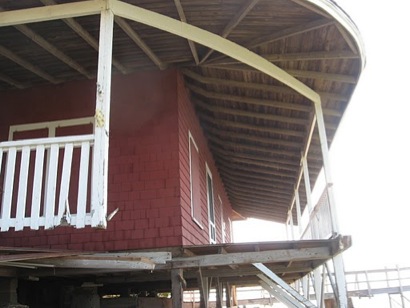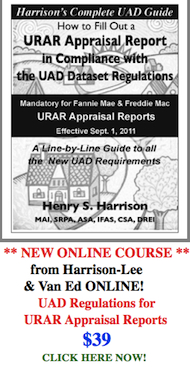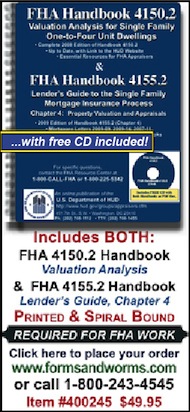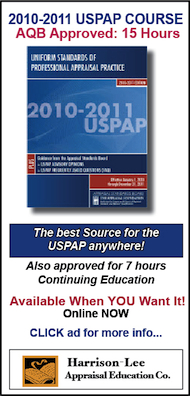Editorial
Having just lived through Hurricane Irene, and the significant tidal flood damage done to our summer cottage in Long Island Sound from the 7 foot storm surge added to our normal high tide of 8 feet, this article struck our attention.
The GOOD NEWS: My own experience dealing with FEMA personnel in a difficult situation has been surprising, given their less than stellar reputation.I found them to be professional, courteous and genuinely helpful. In our area of the Connecticut shoreline there was a great deal of damage, including the wash-out of many of our main access roads. Nonetheless, the FEMA adjusters showed up and did their job of assessing the damage in a timely manner.
At issue in Congress now are new requirements for flood insurance coverage in residential and business areas near levees, dams and other flood-control structures.
According to a report October 19th in Property Casualty 360, two Gulf-Coast senators are seeking to remove a Senate flood-insurance legislation provision requiring flood coverage in areas already protected by levees, dams or other flood-control structures. Sen. Thad Cochran, R-Miss., and Mark Pryor, D-Ark., announced late Monday that they are seeking to have Sec. 107 of the National Flood Insurance Program Reauthorization Bill deleted from the proposal. The provision was included in a bill that was reported out of the Senate Banking Committee Sept. 8.
Cochran and Pryor are raising the issue despite the fact that the Senate is working under the pressure to pass another temporary extension of the National Floord Insurance Program (NFIP), now slated to sunset Nov. 18.
The Senate must pass a bill, then reconcile its version with a somewhat different House bill, H.R. 1309, the Flood Insurance Reform Act of 2011, before that date, or NFIP will lapse.
Seems Congress is once again playing brinksmanship with America's flood insurance program. After our recent experience, that doesn't seem wise to us.
Summer Cottage "Pre-Irene":

Post-Irene Damage from Tidal Flooding:

Matt Gannon, assistant vice president of federal affairs for the National Association of Mutual Insurance Companies, voices sympathy for the concerns of Cochran and Pryor, but adds that the Senate bill’s Technical Mapping Advisory Council was established to address this very type of issue. But Cochran and Pryor say they are asking their colleagues to join them in signing a bipartisan letter to the banking panel asking for reconsideration of Sec. 107. This provision would have expanded required insurance coverage to “areas of residual risk” that are located behind levees, near dams or other flood-control structures.
“The NFIP must be reformed, and I believe the Senate Banking Committee has done yeoman’s work on crafting bipartisan reform legislation,” Cochran says. But he notes that Sec. 107 creates new flood insurance coverage mandates on families and businesses that are already protected by strong levees and dams, and believe that "the blanket approach taken in the current bill should be changed in order to ensure fair treatment for those protected properties."
Ask Henry
Hello Henry,
I have an underwriter saying that the economic life needs to be included on all reports, even though the URAR form 1004 says it is needed for HUD/VA only. Have I missed something in this regard? Thanks in advance for your time.
Yours,
Dianne Mendel
mndcns@att.net
Dear Dianne,
The USPAP states that for every appraisal, the appraiser and the lender client must have a scope of work dialogue. The designers of the URAR 1004 have incorporated some of their scope of work requirements into the URAR. What the URAR is telling you is that Fannie Mae and Freddie Mac do not require that you estimate the remaining economic life while the HUD/VA does require it. However, if the appraiser feels it is necessary in order to make a credible appraisal (which is required by the USPAP) it should be included. What the underwriter is saying to you is that for the lender/client they represent, it is required, which is their right.
Ask Henry
Hi Henry,
I did an FHA Appraisal for Lender A back in July. I was paid and the file was closed. I was not able to inspect the attic at the time, as the attic entrance was sealed off. This was noted in the appraisal report. Last week (3 months after my previous inspection and report) Mortgage Company B called and said they have my appraisal, the loan did not close with Lender A and they have a new lender who will accept my appraisal. However, they need me to go back to the property and inspect the attic for a fee. I refused as I completed the original assignment for Lender A and the file is closed.
Mortgage Company B and the homeowner keep calling me to comply and do the attic inspection. I called Lender A and they said "do not inspect, this is a USPAP violation and changes the scope of work." I want to be done with this appraisal and Mortgage Company B. My questions is whether this is indeed a USPAP violation? What is the best way to handle this with Mortgage Company B and the homeowner, who both keep calling me?
Thanks for your time,
Rob
rburkley@columbus.rr.com
Dear Rob,
The USPAP is quite clear that when the client changes, it requires a new scope of work dialogue and a new appraisal. There is nothing that requires you to make a new appraisal for the new client but why not do so? However, there is also nothing to stop you from making the inspection as long as it does not become part of your original appraisal report. For a new appraisal, you are permitted to use any of the data in the old appraisal as long as it was not provided to you on a confidential basis. It should be easy to update the physical description of the property, the neighborhood data, etc., and make the attic inspection which will be part of the new scope of work requirement. I suggest offering to make a new appraisal for Mortgage Company B, taking into consideration that much of data will already be available to you. You'll make the homeowner happy, and may even develop a new client.
Letter to the Editor
Industry Cooperation
To the Editor:

I've been in the business going on 40 years and have attempted to find others that are willing to cross association lines in an effort to foster cooperation, for any number of purposes not the least of which is to guide legislation in directions favorable to the appraiser community.
I have talked to some other pros out here in the Portland Oregon area who are willing to get involved in an information campaign to foster understanding, cooperation and unity. We have already had praise from some legislators out here who desperately want to hear from unified Industry Coalitions. They simply don't have time to listen to individuals who may not represent everyone.
We need to get together on many issues that affect us all. The appraise community is being devastated by large powerful organizations. Do you have any resources from past articles that relate to that subject? And further, would Mr. Harrison be interested in receiving progress updates or offering his support to this kind of effort?
Thank you,
Matt Gloege, Certified Res. Appraiser
Oregon City, OR 97045
fho2@comcast.net
Dear Matt,
I had a discussion with Henry about your email to me, and while we both agree that a cohesive well-represented national appraisal profession would be an excellent thing, based on our experiences over the past 40+ years, we do not see any hope that this "gang of cats" can be herded together, even if it would be very much in their best interests.
Sadly, unlike doctors and lawyers, appraisers do not have any history of working in a unified manner on the national level that would enable them to have real political impact.
We appreciate your efforts in advance, and wish you the best of luck.
Yours,
Ruth Lambert, Editor
Ask Henry
Hi Henry,
In my experience, when I've done estate appraisals, the date of death provided the lower value for the client. If the estate has not been settled, say for more than one year, and the value decreases after DOD, will IRS accept a current value? I've encountered a situation, in which the electricity went off during an ice storm, the oil-fired boiler (which has a reset switch to prevent a buildup of oil in the firebox was not reset by anyone when the power came back on because no one was living in the house. The pipes froze, burst, and did a tremendous amount of damage as a result of water gushing from the baseboard hotwater system. The estate is in its third, going on 4th year. What is the property way to provide an estate appraisal?
Jack Sotack, Waymart PA
accent@echoes.net
Dear Jack,
The effective date of the appraisal is determined at the scope of work dialogue between the appraiser and the client. There is nothing in the USPAP other than this requirement. Often when the appraisal is made for estate work the date of appraisal is the date of the death of the owner, but not always. Whatever the effective date of the appraisal is date that you use for the condition of the property on that date and the market at that time.
BREAKING NEWS
Check out the
FREE VIDEO of USPAP Changes
for 2012-2013
For many appraisers, a video presentation will be the least painful way to learn about the forthcoming USPAP regulations.
The Appraisal Foundation has announced the release of a free video on its website entitled "A Preview of Changes to the 2012-13 Uniform Standards of Professional Appraisal Practice (USPAP)". It is ready now.
The video is just 23 minutes in length, and features an interview with the 2011 Chair and Vice Chair of the Appraisal Standards Board (ASB), J. Carl Schultz, Jr. and Barry Shea, respectively. A PowerPoint presentation is available for simultaneous viewing as well.
USPAP changes discussed in this video include:
1) Revisions to DEFINITIONS of “Client,” “Extraordinary Assumptions,” and “Hypothetical Condition,” as well as a new definition of “Exposure Time”;
2) Creation of a new RECORD KEEPING RULE and related edits to the Conduct Section of the ETHICS RULE;
3) Revisions to Advisory Opinion 21, USPAP Compliance; and,
4) Revisions to STANDARDS 7 & 8: PERSONAL PROPERTY APPRAISAL, DEVELOPMENT & REPORTING.
A Mock Administrative Hearing and an audio webinar on Fair Value Measures are also available online from the AF's eLibrary.The Appraisal Foundation has plans to expand its eLibrary later this year with a videotaped session on Green Buildings and their Valuation, coming in late 2011.
Click here now for the USPAP VIDEO.
Any questions? Please Contact the AF directly:
Paula Douglas Seidel, Executive Administrator
paula@appraisalfoundation.org
IN MEMORIAM

As genuine MAC addicts, we at REV join the millions of fans and customers around the globe in mourning the death of Apple founder and former CEO, Steve Jobs. He enriched the lives of so many of us with unique 21st Century devices that are beautiful, practical and most importantly, fun to use.
For a moving convocation by one of this generations greatest thinkers, click the video below to watch Steve Jobs’ commencement speech at Stanford from May 2005.
Ask Henry
Hi Henry,
You do a fantastic job and are THE SOURCE for appraisal questions and dilemmas. I have one of those dilemmas now!
I have a client who is asking me to take a new assignment on an appraisal that is over a year old and that I did for another lender. Obviously, the new client wants their name on the appraisal, but they do not want a current value. May I take the new assignment?
Thanks in advance,
Mary Buckman, SRA
Green Bay, WI
maryb@vogelsbuckman.com
Dear Mary,
Thanks for the kind words.
The effective date of the appraisal is determined at the scope of work dialogue between the appraiser and the client. Many appraisals are made with an effective date at some time in the past. Whatever the effective date of the appraisal is, that becomes the date that you use for the condition of the property and the market at that time. The only USPAP restriction is that you cannot use any confidential information you received from the original client without their permission.
News
On September 30th, the Appraisal Institute released a new form intended to help appraisers analyze values of energy-efficient home features.
The Appraisal Institute issued the form as an optional addendum to the URAR (Fannie Mae 1004-Freddie Mac 70). It is intended to help the industry standardize the way residential energy-efficient features are analyzed and reported. The Appraisal Institute's addendum allows appraisers to identify and describe a home's green features. The form also will make it easier for appraisers to determine whether recent home sales should be used as comparable sales.
The Appraisal Institute plans encourage lenders, home builders, real estate agents and homeowners to take advantage of this new tool.
Click GREEN ADDENDUM FORM to download a PDF copy of the new form.
Ask Henry
Hi Mr Harrison,
I'm working on a cluster home attached on one side to another property. The two residences share a common wall, and the properties are very similar. My problem is that there are no other similar comps in the neighborhood; the last similar property was sold 3 years ago. Can i use aanother type of property as a comparable?
Thank you,
Al at Florida House Appraisals
coriale4@comcast.net
Dear Al,
Getting good comparable sales is a perpetual problem for appraisers. There are no rules about where you can seek comparable sales information. It is up to the discretion of the appraiser. If a client tries to restrict where you can get comparables from you should either talk them out of the restriction or refuse the assignment, because if you accept this restriction there is a good possibility you will be making an appraisal that violates the USPAP. There are exceptions to this rule which are complex and would require limiting conditions, assumptions and possibly a custom definition of value.
The USPAP requires that you make a "credible appraisal". If you do not think there are sufficient comparable sales available that make it possible for you to do this, I recommend that you turn down the assignment.
Ask Henry
Hello Henry,
I have a client who's requesting a market value and a disposition value on every commercial report. If you were asked to do that, what steps would you take and how would you go about coming up with your disposition value? Thanks for taking the time to answer my question.
Robert Jones
Certified General Real Property Appraiser
robertjones56@bellsouth.net
Dear Robert,
As part of the "Scope of Work" dialogue that the USPAP requires you to have with a client before you make an appraisal, you have to agree regarding what definition or definitions of value are going to be used. This is not a problem when the value in question is market value as its definition was blessed by the US government as part of the FIREA act. However, when a special value definition is needed, it is usually supplied by the client (ERC is a good example).
I think you are looking for trouble if you try to draft a custom definition of value. It might even be considered "practicing law without a license". My recommendation is that you suggest that the client have their attorney draft the definition they want you to use for disposition value.





















